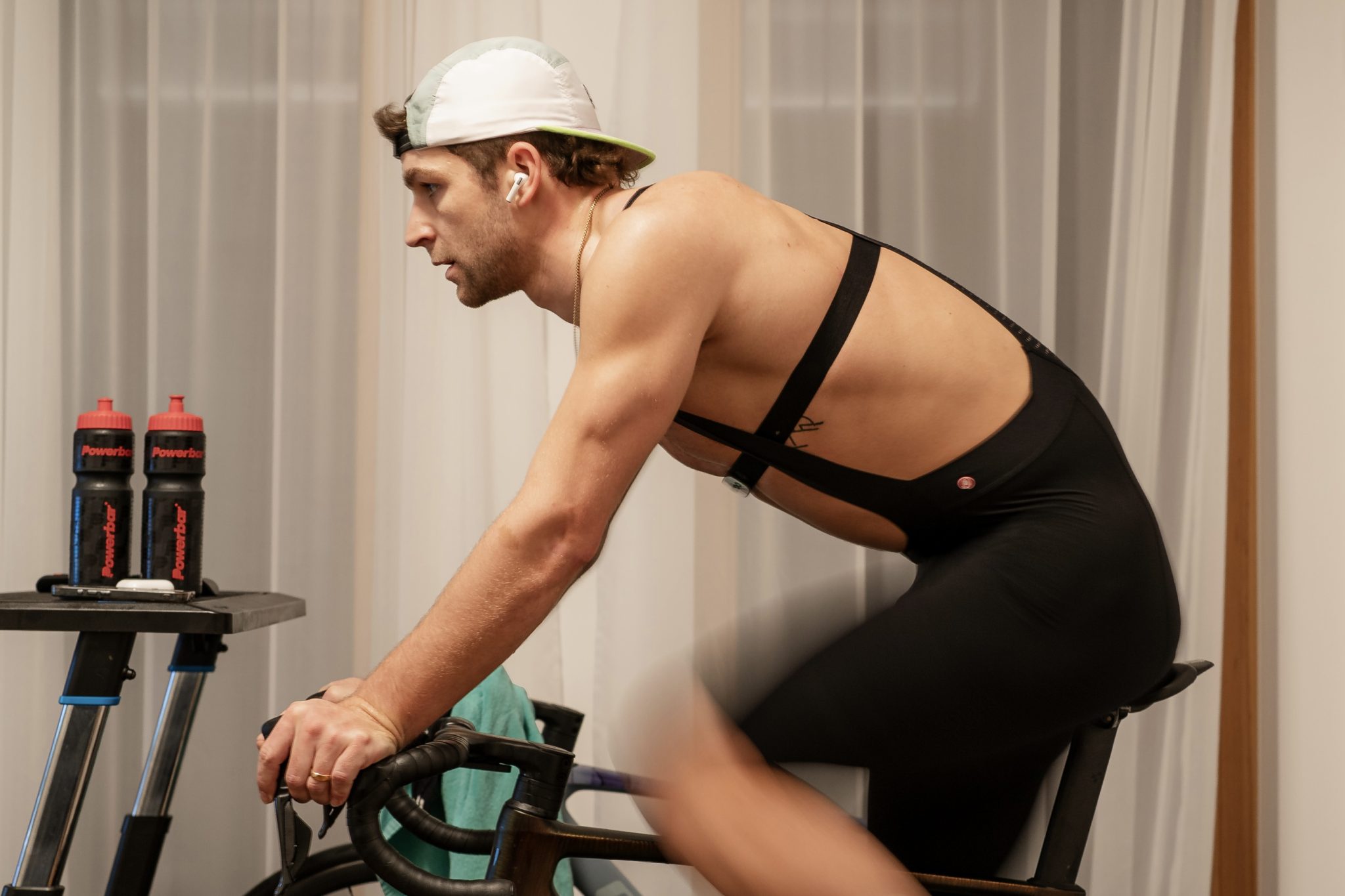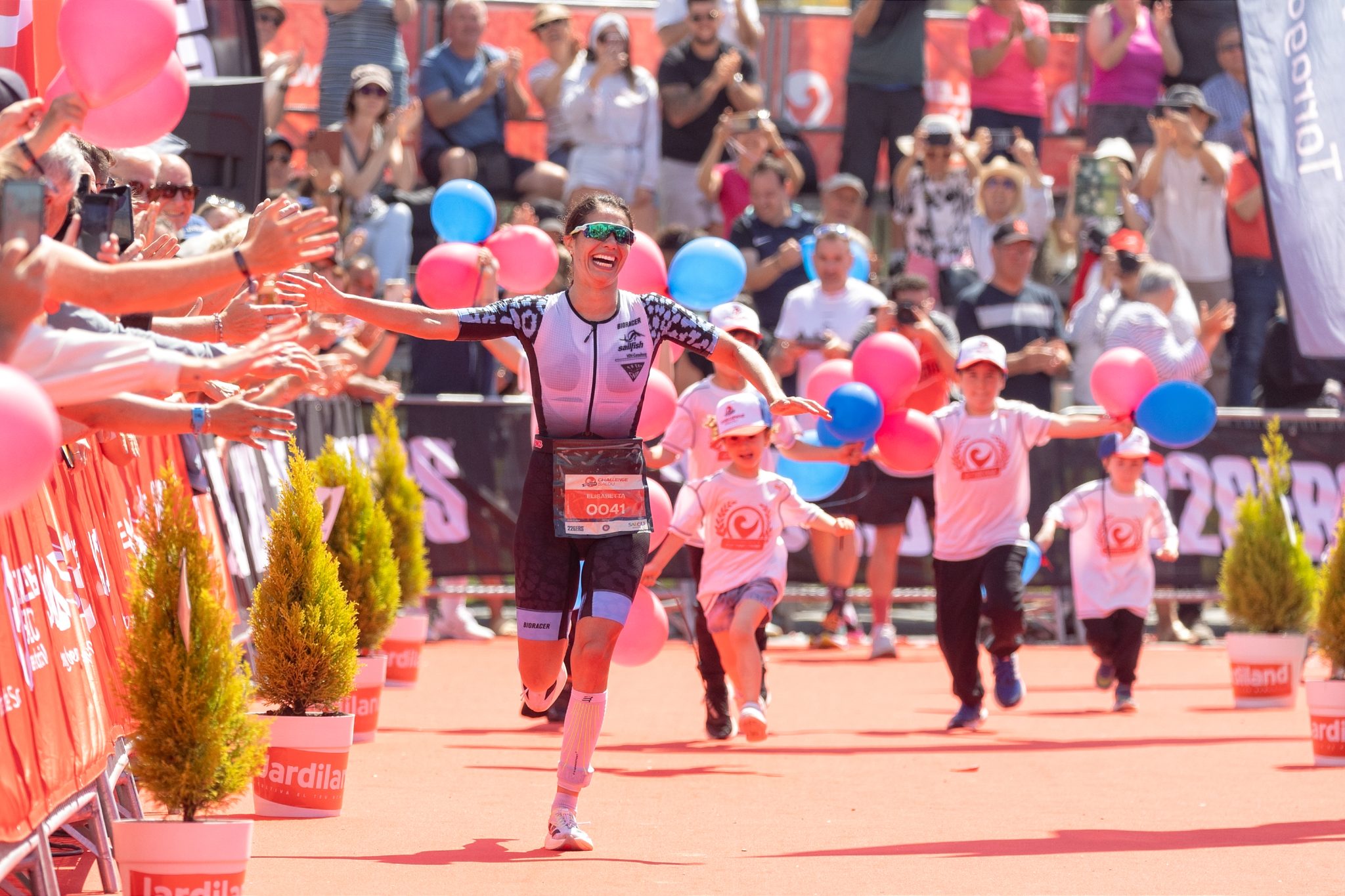Quintana Roo pro, Haley Chura, is one of the best swimmers in triathlon, and in her years racing she’s seen it all, has made every rookie mistake, made every wrong turn (and made it right!).
So she came to us with five can’t-miss tips to make your race day swim as smooth as possible!
1. Don’t Follow the Feet Blindly
There’s something nice when you’ve found a swimmer in front of you to draft off, to just settle into their pace and go on autopilot, thinking about T1 and getting a good start on the bike. It’s all good… until you look up and realize the feet you’ve been following are 75 yards off course. You’ve just blindly followed the leader, right off course.
“If the water is calm, I like to do ‘alligator eyes’ and just do quick glances to make sure of where I’m going,” Chura says.
Especially if it’s choppy, pull your head and chest right out of the water to make sure you’re on track… then get back to pacing those feet in front of you, provided they’re on the right heading.
“People love to follow feet, but you need to sight; you don’t want those feet to lead you off course.”
2. Choose Race-day Goggles Wisely
Which side do you breath to? Is it into a rising morning race-day sun? Or does the swim start pre-dawn, or on a dark, cloudy morning? Take a range of goggles with you—clear, and tinted—and be ready to see, or prevent the sun from blinding you every time you take a breath.
“I always suggest people pay attention to where the sun is going to be when it comes up for race day,” Chura says. “Certain races start in the dark, so you‘ll want lighter goggles. Know what goggles you’ll want for any specific race you’re doing.”
3. Pre-soak your Wetsuit
If you’ve had your wetsuits stored away for the offseason, and really before any race, Chura recommends pre-soaking the inside of the suit. There’s a faction that contends that the inner jersey material inside the suit becomes more flexible when it’s been wetted in the ocean, pool or lake and dried overnight.
But even right before a race, Chura wets her suit for another reason: warmth.
“I always get it wet just before the race starts,” she says. “I’ve found that small layer of water keeps you warm. So get in the water just before the race, or even bring a water bottle and pour a little water in there, to keep you warm.”
4. Take the Strip!
If your race has wetsuit “strippers” (volunteers there to help remove your suit), don’t dash past them in a race to get to the bike rack. You’ll find that it’s generally a lot faster (and much less stressful) to stop and have these volunteers remove your suit, than doing the foot stomp trying to get your suit over your ankles.
“Pull your suit down halfway, and then stop, sit on the ground, lay on your back and let them take it off,” Chura says. “I recommend this especially if you haven’t practiced much with getting your suit off. It’s a lot easier to have someone else pull it off than standing there getting flustered.”
5. Pin that Timing Chip On
When the race gives you a timing chip and strap, be sure to ask the volunteers for a safety pin (or bring one of your own) to pin the strap’s end to itself on your ankle on race morning. (And be careful not to poke yourself in the ankle in the process!)
Whether it’s due to a weak and worn-out Velcro closure, or an overzealous triathlete grabbing your ankle—and the strap—in the chaos of the opening yards of a race’s swim start, the straps can come loose, with your timing chip ending up at the bottom of the lake or ocean.
“I’ve lost it enough times that I always pin it up once it’s on,” Chura says. “Nothing like not having your splits after the race!”
With these tips, we’re sure the first discipline on race day can be one of your best!



